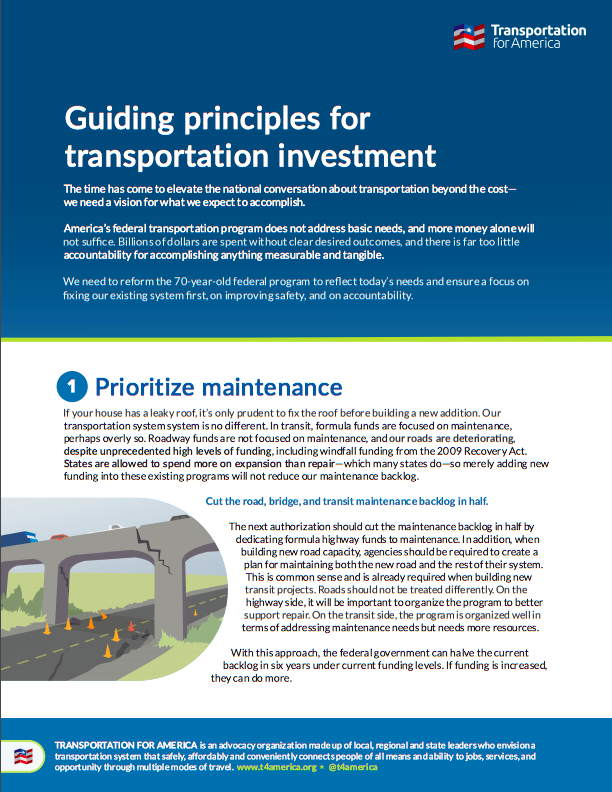Stop funding transit like it’s 1982, Congress
Congress has suggested that they may focus on infrastructure in an upcoming stimulus bill. It’s not entirely clear what Congress will do—or if spending on infrastructure is the right way to stimulate the economy right now—but if Congress does want to pass an infrastructure package, they should stop spending money like it’s 1982.
Transit agencies need to keep telling Congress what COVID-19 is costing them
With costs rising to protect transit personnel from the pandemic and revenue streams simultaneously coming to a halt, public transportation likely needs more emergency funding than the $25 billion passed three weeks ago. Transit agencies have a responsibility to communicate their needs—and the major steps they’re taking to save lives—to their Congressional delegations.
Two bills put “access” at the heart of transportation policy
For too long, the focus of the federal transportation program has been vehicle speed, not helping Americans access jobs, schools, grocery stores and more. It’s time to focus our funding on improving people’s access to jobs and services—and U.S. Rep. Chuy García’s (IL-4) two new bills will do exactly that.
Building a better stimulus package: here’s how
With the $2 trillion rescue plan approved, Congress is already eyeing another COVID-19 relief and recovery package later this month. Based in part on what we learned from the 2009 stimulus, Transportation for America contributed infrastructure proposals to Smart Growth America’s detailed recommendations for economic stabilization and recovery. We must ensure that any further stimulus empowers communities to be economically prosperous, socially equitable, and environmentally sustainable.
EPA rolls back CAFE standards, highlighting the need to reduce driving
This week, as the coronavirus crisis worsens, the Trump Administration finalized its rollback of clean car standards, a move that will undermine public health and place even more of a burden on finding ways to reduce driving to reduce emissions.
Here’s what Transportation for America has been up to this March
With COVID-19 throwing public transportation into an existential crisis, Transportation for America mobilized to preserve America’s most essential transportation service—and we did, with Congress agreeing to $25 billion in emergency assistance for transit operations this week. But while the news has understandably been consumed by COVID-19, the pandemic hasn’t been the only thing on our plates.
2.8 million essential workers use transit to get to their jobs
A new report from TransitCenter finds that 2.8 million transit riders are considered “essential workers” during the COVID-19 emergency, underscoring just how essential it is to keep transit running. Under normal circumstances, they account for more than a third of total transit commuters in the country.
Congress heard you: deal struck with $25 billion in emergency funding for transit
Early this morning, congressional leaders and the White House agreed to a $2 trillion COVID-19 economic stabilization plan that includes $25 billion emergency direct assistance to transit agencies, at a time when agencies’ revenue is plummeting, as well as more than $1 billion for passenger rail. This is a huge victory, and it wouldn’t have been possible without your thousands of messages and calls to Congress and our letter to House and Senate leadership. But there’s still more work to do.
Release: Senate deal provides vital $25 billion lifeline to ensure essential public transportation service can continue
After news of the Senate’s tentative agreement on a $2 trillion stabilization package that included $25 billion in emergency operating assistance for transit, Beth Osborne, director of Transportation for America, released this statement:
COVID-19 will cost transit agencies $26-$38 billion, TransitCenter estimates
In a new report, TransitCenter estimates the gargantuan funding shortfalls that U.S. transit agencies will experience due to impacts from the COVID-19 pandemic. Unprecedented drops in ridership, reduced economic activity, and increased costs to keep personnel and essential riders (including healthcare workers) safe are driving a funding gap that is only projected to grow.





